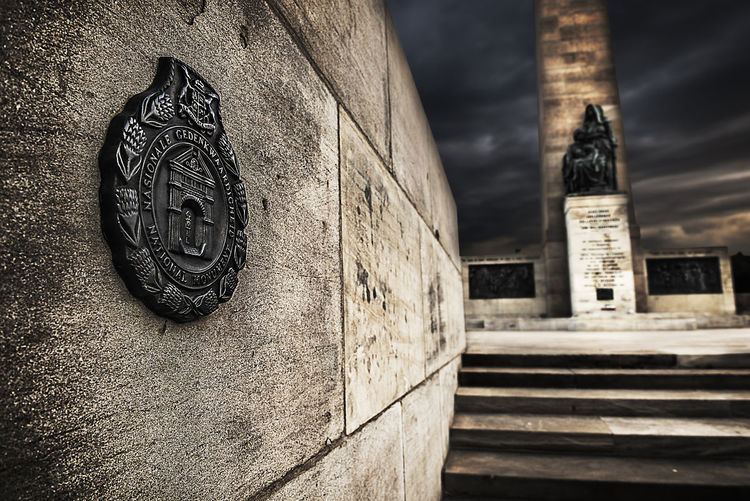Opening date 1913-12-16 Phone +27 51 447 3447 | Opened 16 December 1913 | |
 | ||
Hours Closing soon · 8AM–5PMWednesday8AM–5PMThursday8AM–5PMFriday8AM–5PMSaturday10AM–5PMSunday11AM–5PMMonday8AM–5PMTuesday8AM–5PMSuggest an edit Similar Anglo Boer War Museum, Oliewenhuis Art Museum, First Raadsaal, Fourth Raadsaal, Old Presidency | ||
The Women's Monument or Vrouemonument in Bloemfontein, South Africa, is a monument commemorating the suffering of some 27,000 Boer women and children who died in British concentration camps during the Second Boer War. The Monument is a Provincial Heritage Site in the Free State.
The monument was designed by a Pretoria architect, Frans Soff, and the sculpting by Anton van Wouw. It consists of an obelisk about 35m in height and low, semi-circular walls on two sides. A central bronze group, sketched by Emily Hobhouse and depicting her own experience of 15 May 1901, is of two sorrowing women and a dying child in the Springfontein camp. The monument was unveiled on 16 December 1913, attended by about 20,000 South Africans. Thirteen years later, Emily Hobhouse's ashes were ensconced at the foot of the monument. Also beside the monument are the graves of Christiaan de Wet, Rev. John Daniel Kestell, President of the Orange Free State Martinus Steyn, and his wife.
Origins
The idea of a monument was expressed by Martinus Steyn, then president of the Orange Free State Republic, whilst receiving medical treatment in Europe after the Boer War. His wife, Rachel Isabella 'Tibbie' Steyn, played a part in the concept, having lost family and friends in the concentration camps. She also had close ties with Emily Hobhouse. On his return to South Africa, Steyn set up an action committee to launch the project. The notion of constructing a school or hospital was rejected as lacking inspiration, a view which gained support from a number of Afrikaner organizations.
£10,000 of funding for the monument came from the Afrikaner community over a period of four years from 1907 to 1911. The start of construction was delayed by English-speaking members of the Bloemfontein Town Council, who felt the memorial would reflect poorly on Great Britain and by extension on the locals who had supported the war.
Prime Minister Louis Botha, who had embarked on a mission of reconciliation after the war, also disapproved of the memorial. This also lead to accusations made that the monument was built, broken down and rebuilt.
